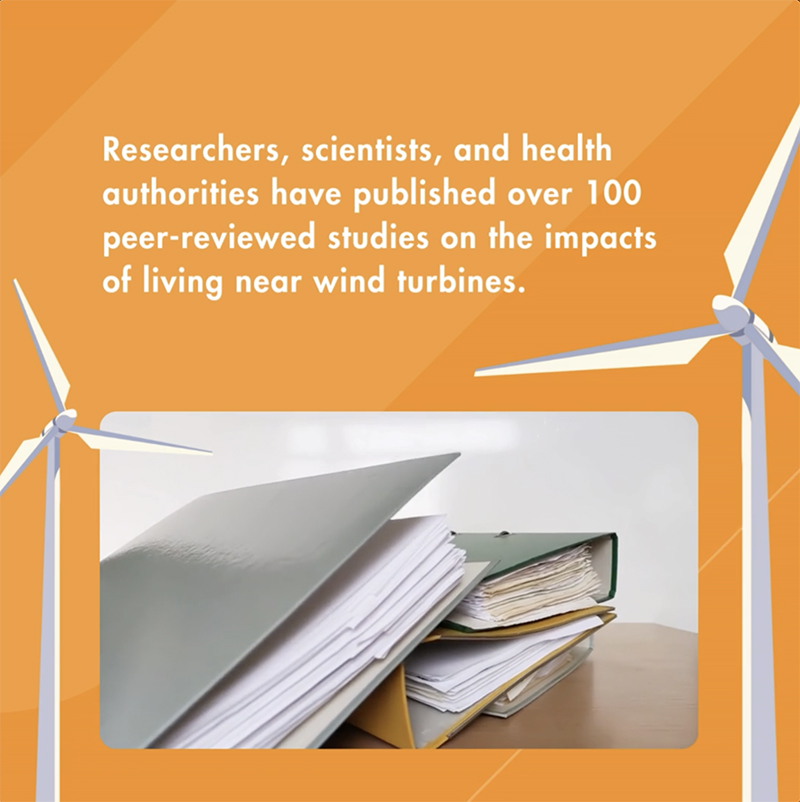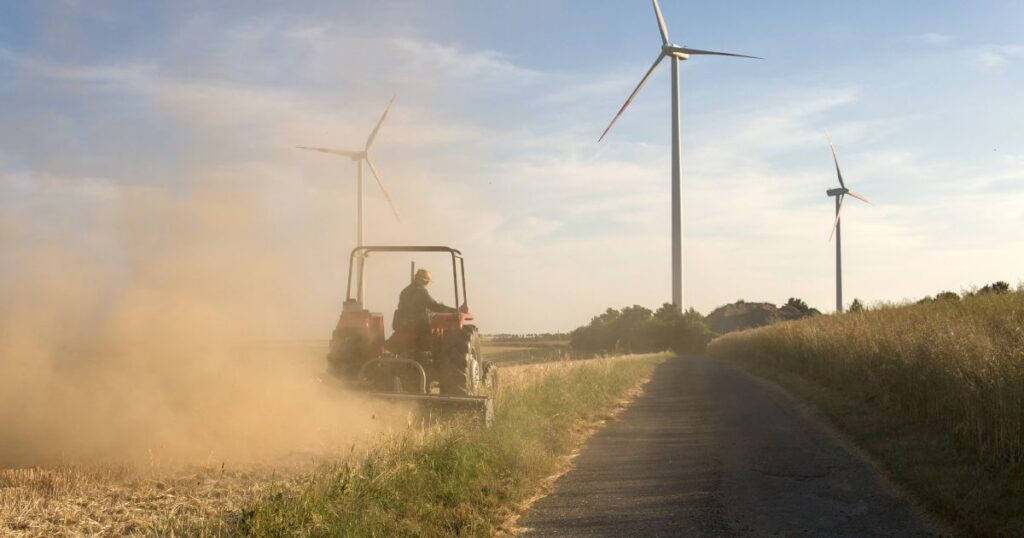SHARE ON:
Share on:
Wind Energy
& Health – The Facts
Wind energy is a vital source of income for Iowa’s farmers and economic growth in our rural counties. For more than 20 years, Iowa has been a leader in wind energy to the benefit of Iowans.

As Gov. Kim Reynolds noted in her Condition of the State Address,
“Over the last two decades we’ve made changes that turned Iowa into an energy leader. The results speak for themselves. We’re a leader in renewable energy and biofuels. We rank in the top 10 for grid reliability. And we’ve done all this while maintaining some of the lowest electricity prices in the country. And that’s a plus for Iowans and a big recruitment tool for economic development.”
But some in our communities have concerns about wind energy’s impact on human health, despite its positive track record in our communities.

What the Science-Based Research Says
Noise and Health

The sound produced by wind turbines does not pose a risk to human health, according to peer-reviewed scientific studies.
An independent review of peer-reviewed studies conducted by the University of Iowa College of Public Health found “there is no authoritative evidence that sound from wind turbines represents a risk to human health among neighboring residents.”
Health Canada Study (2014): No connection was found between wind turbine noise and self-reported health conditions, including sleep disturbance and chronic stress. This study included looking at the health of 1,200 people living in proximity to wind turbines.
A review by the Australian National Health and Medical Research Council (NHMRC) found “no consistent evidence that wind farms cause adverse health effects.”
Similarly, the Massachusetts Department of Environmental Protection concluded that while turbine noise may be annoying to some individuals, it is not harmful to health.
Infrasound

Infrasound, or sound below the level of human hearing, is sometimes cited as a concern.
The Health Canada Wind Turbine Noise and Health Study found no link between exposure to infrasound from wind turbines and negative effects on sleep, blood pressure, or general health.
Shadow Flicker

Shadow flicker occurs when sunlight passes through rotating turbine blades, creating a flickering effect.
Shadow flicker speeds fall below the threshold for triggering epileptic seizures, according to a report of scientific studies published by the Lawrence-Douglas County Public Health and University of Kansas Medical Center.
"Wind Turbine Syndrome"

The term “wind turbine syndrome” has been used to describe various symptoms attributed to wind turbines. However, it is not a recognized medical condition
The University of Kansas Medical Center report concluded that there is no scientific evidence for negative health effects called “wind turbine syndrome.”
Electro Magnetic Fields (EMF)

Wind turbines, like all electrical devices, generate electromagnetic fields (EMF) during operation.
The Ohio Department of Health (ODH) assessed the potential health impacts of electromagnetic fields (EMFs) generated by wind turbines and concluded that there is no peer-reviewed scientific evidence linking exposure to EMFs from wind turbines to adverse health effects.
The Benefits of Clean Energy
Energy Security
Wind energy decreases dependence on imported fossil fuels – energy can be homegrown right here in Iowa.
Economic Growth
Wind projects create jobs and provide stable income for landowners and communities. That includes $29 billion invested in Iowa from wind, solar and battery storage and 74.3 million in land lease payments to Iowa landowners annually.
Improved Air Quality
Replacing fossil fuels with wind energy reduces air pollution, which is a known cause of respiratory and cardiovascular diseases. More than 36,100,000 metric tons of CO2 emissions have been avoided in Iowa thanks to wind, solar and storage projects – the equivalent of 7.8 million cars off the road.
So what does this all mean?
The overwhelming consensus from scientific, peer-reviewed research is clear: wind turbines are not harmful to human health when properly sited. They are a safe, clean, and vital part of our all-of-the-above energy strategy to provide a reliable, affordable and sustainable energy future.
Wind energy opponents sometimes use non-peer reviewed “studies” to back their claims – but these reports are questionable.
The limitations of non-peer-reviewed studies include:
- Lack of Rigorous Review: These studies have not undergone the rigorous scrutiny of peer review, which helps ensure the validity, reliability, and quality of the research.
- Potential Bias: Non-peer-reviewed studies may be more prone to biases, including selection bias, recall bias, and confirmation bias, which can affect the accuracy and objectivity of the findings.
- Uncertain Quality: The methodologies and data quality in non-peer-reviewed studies can vary widely, making it difficult to assess the reliability of the results.
- Limited Credibility: Without peer review, the credibility and acceptance of the findings within the scientific community are limited.
- Incomplete Information: These studies may lack comprehensive data and thorough analysis, leading to incomplete or misleading conclusions.
Due to these limitations, non-peer-reviewed studies are generally not considered as robust or reliable as peer-reviewed research.
Live in Clinton County?

Learn what’s happening and what you can do to support wind energy.
Wind energy is benefiting Iowans

8,961 jobs in Iowa are supported on average each year from wind energy investment and construction.
